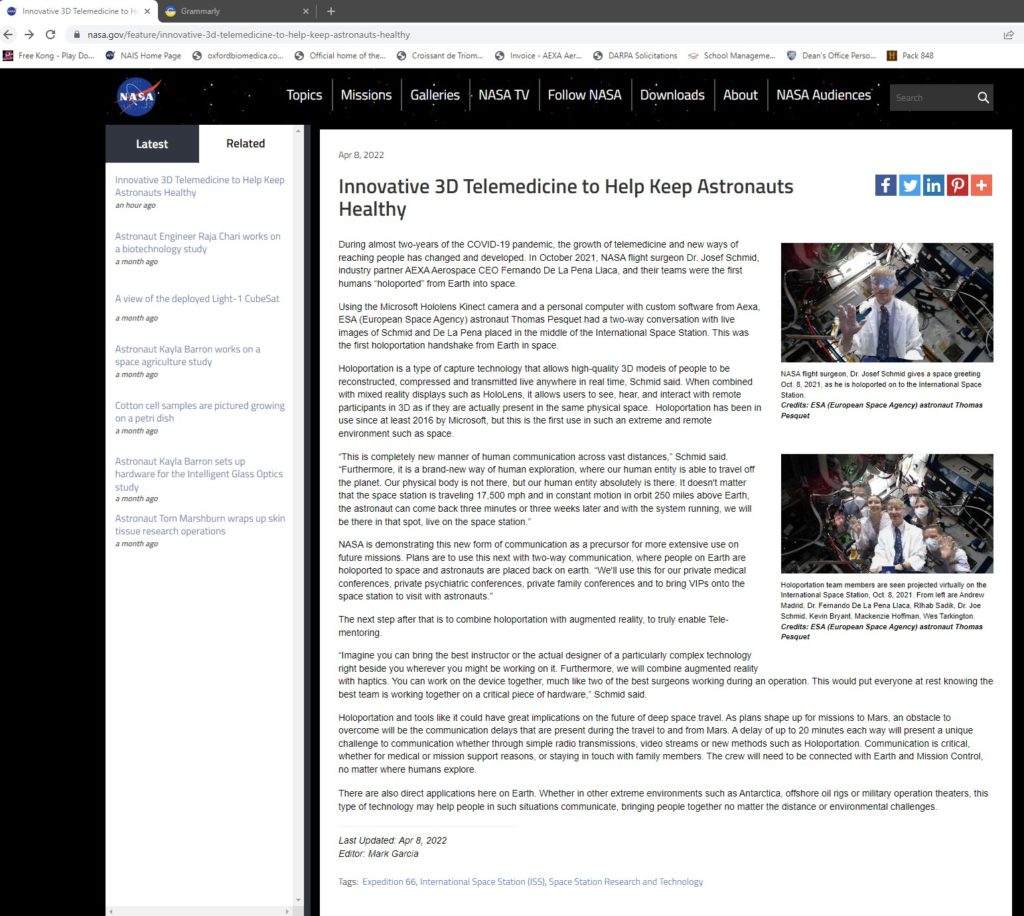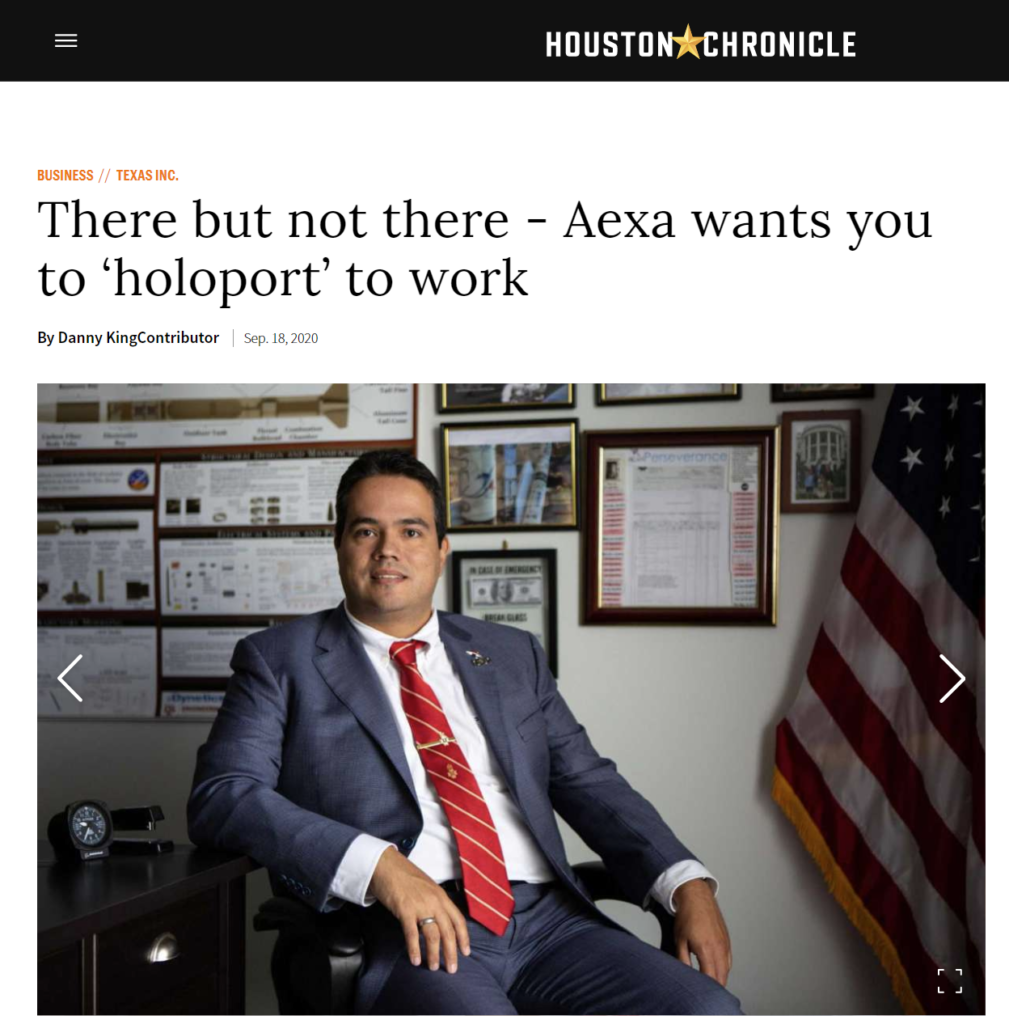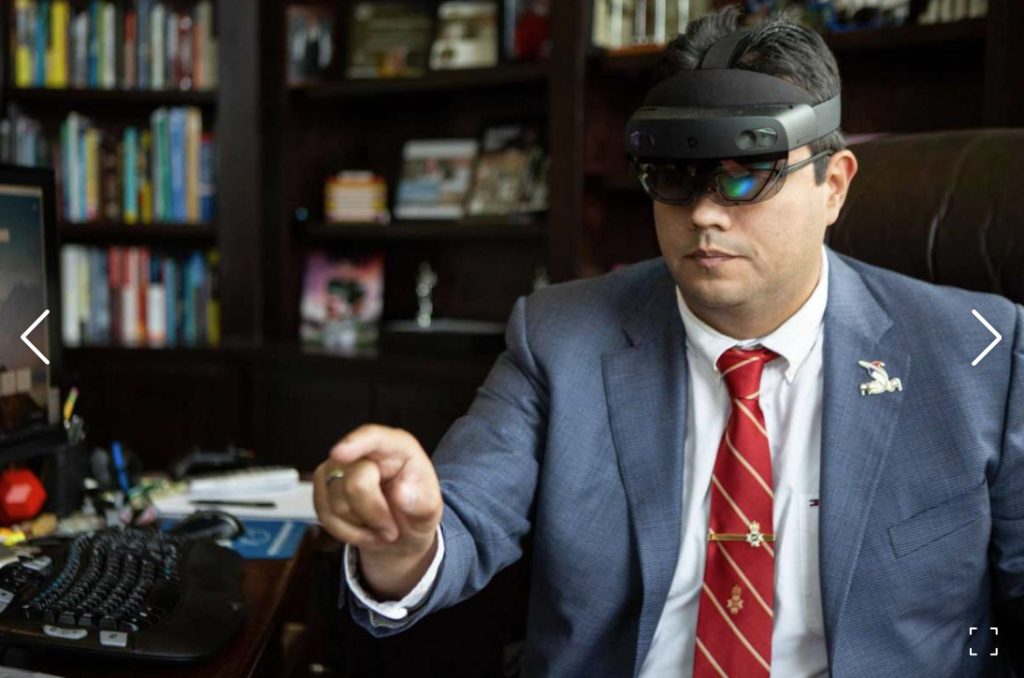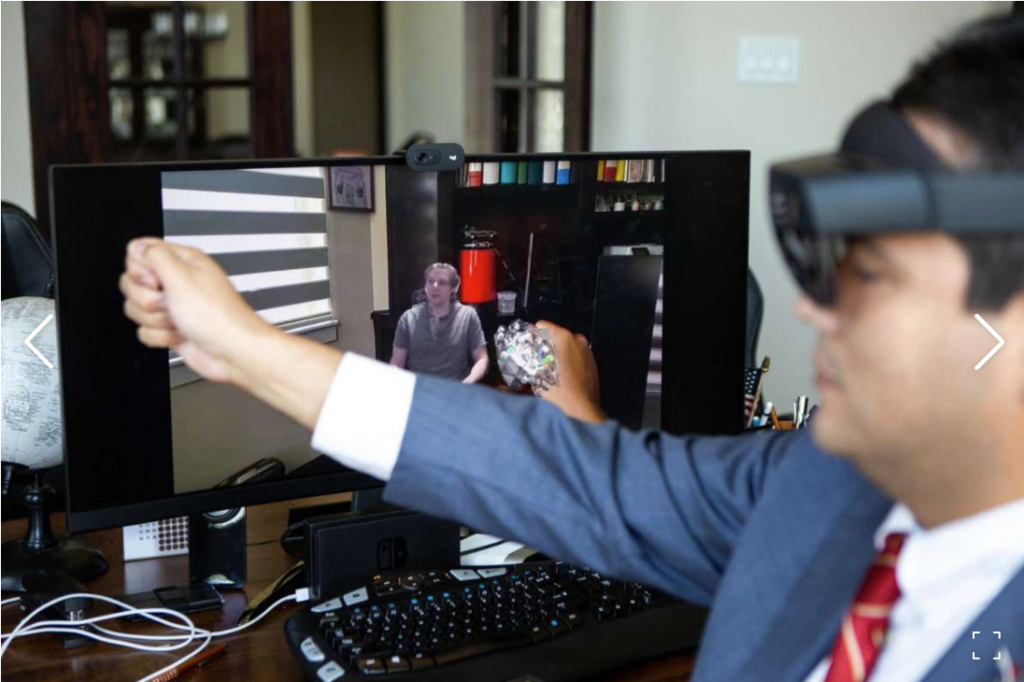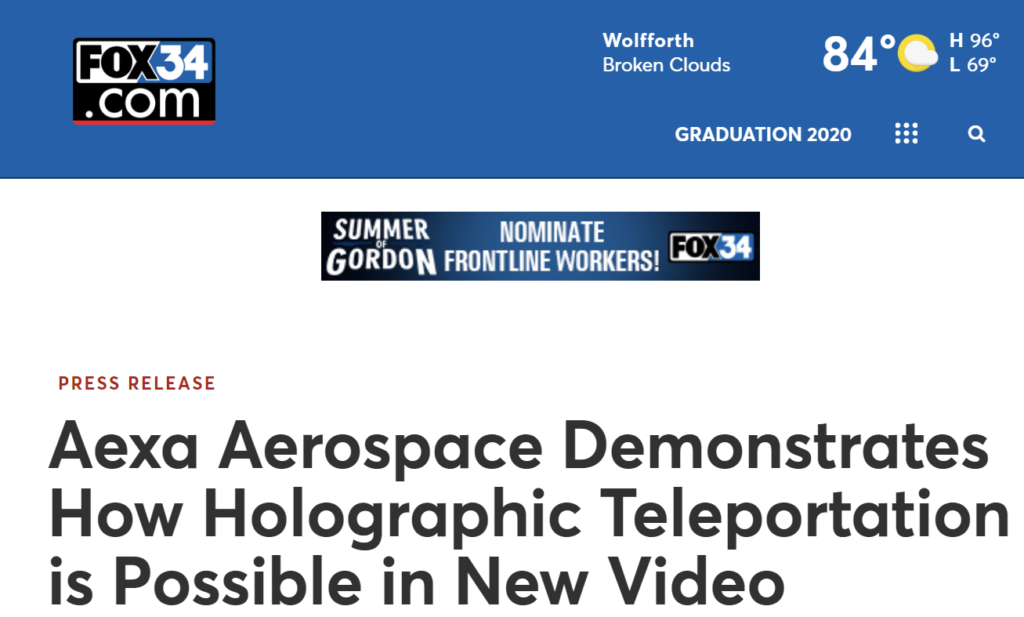As Aexa’s CEO, I’m very proud to share this article published on NASA’s website. We are the first to perform the first off-planet Holographic teleportation in human history. Next week we’ll be the first to perform the first off-planet two-way Holoporatation in human history. Our portable technology has unlimited medical and engineering applications, among other industries. Next quarter we’ll make our technology public, so anyone can use Holographic teleportation as a new way to communicate. Enjoy this article:
